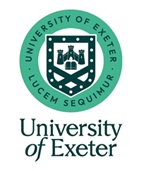Year 3 Curriculum
The Curriculum - What will my child do in Year 3?
More information regarding the core subjects taught in Year 3 is detailed below. To see an overview of the Year 3 curriculum covering every subject, please click here. You can also click on the following links to familiarise yourself with the National Curriculum objectives taught in English and Maths:
English: Reading, Comprehension & Spoken Language
English: Writing
Maths
We have been working hard to develop our curriculum, to ensure that we are driving the key knowledge and skills to ensure progression through the national Curriculum.
Please click here to view the Autumn term curriculum in Year 3.
Please click here to view the Spring term curriculum in Year 3.
Please click here to view the Summer term curriculum in Year 3.

RE - In Year 3, the children continue their faith development and explore the centrality of their faith to their daily lives. At St Edmunds, it is important that this done not only through the RE curriculum but also the personal example of all staff members. In Year 3, many children will prepare for, and receive, the Sacraments of Reconciliation and Holy Communion through the parish. The school fully supports the children in this preparation and fully join in their celebrations of the sacraments. Now that the children are in the Juniors, the children take the lead when preparing and delivering weekly liturgies and assemblies.

In English, your child will continue to work on the spelling patterns they have begun in previous years, but this year there is less of a focus on phonics and more emphasis on understanding and learning the spelling rules, as well as attention to prefixes and suffixes (a group of letters added to the beginning/end of a word). In writing, we will focus on creativity and writing styles; looking at settings, language style, and character within their writing. Your child will also study different genres of writing such as poetry and play scripts.

Maths in Year 3 has a focus on multiplication facts (formerly known as times tables). Quick recall of the required 3, 4, 8, and 50 multiplication facts (as well as the 2, 5, and 10 times-tables they’ve already learned in Year 1 and 2) is important as they form the foundation for a large majority of the work the children will cover within the year.
You will probably notice your child beginning to use column addition and subtraction of three-digit numbers this year, as well as learning about multiplication and division, and using — and applying — their times tables knowledge. They will also cover fractions of quantities, equivalent fractions, angles, parallel and perpendicular lines, area, perimeter, and shape. The national curriculum ‘mastery’ style of teaching concentrates on breadth of knowledge, and children will be encouraged to use their understanding of the new concepts to solve challenges to deepen their understanding.
To learn more about mastery in Maths, please click here.
 Science in Year 3 is engaging and fun. Your child will learn about life processes, rocks, light, forces and magnets, and animals (including humans). How to work scientifically and write up their investigations in a more formal way — using predictions, methods, results and conclusions — is also a key part of this year’s science curriculum.
Science in Year 3 is engaging and fun. Your child will learn about life processes, rocks, light, forces and magnets, and animals (including humans). How to work scientifically and write up their investigations in a more formal way — using predictions, methods, results and conclusions — is also a key part of this year’s science curriculum.









